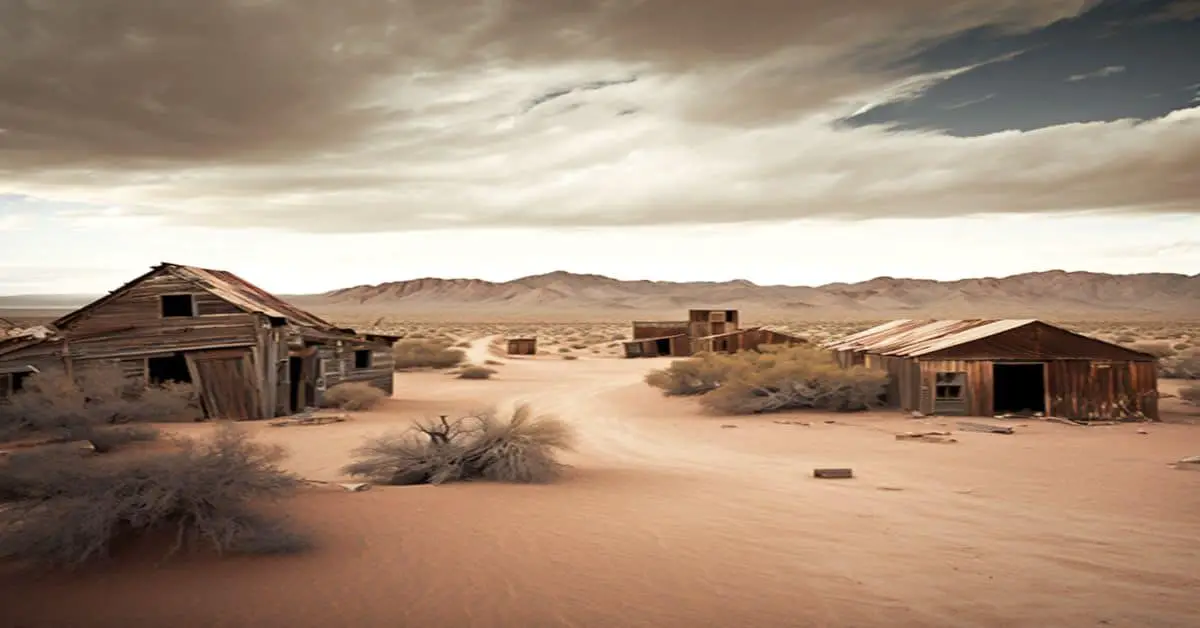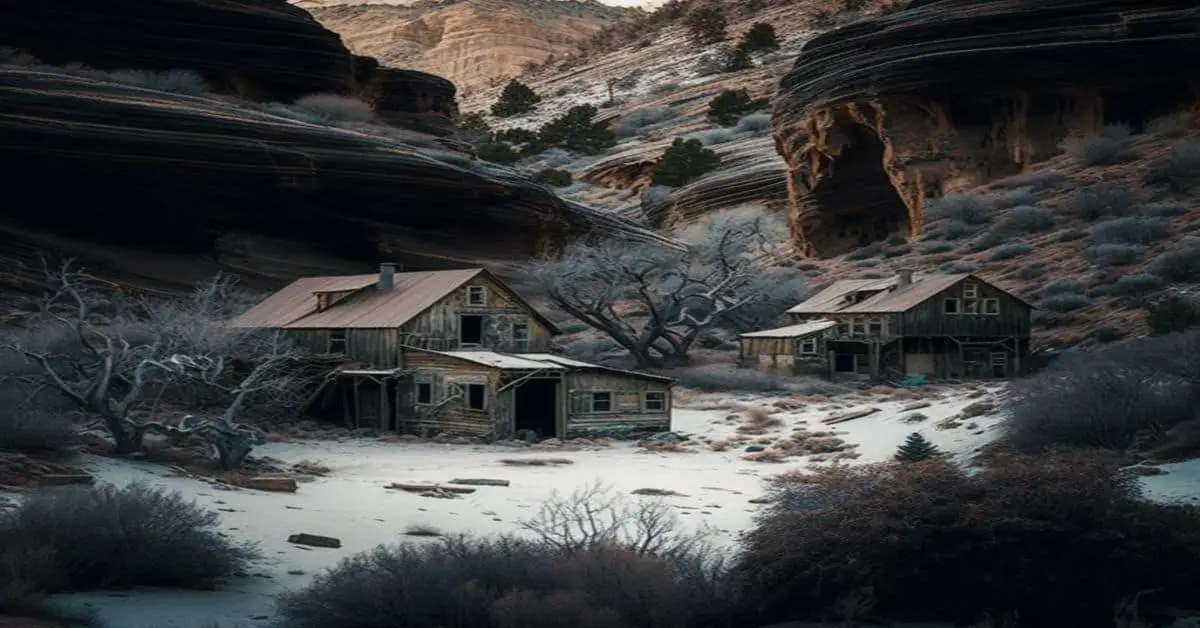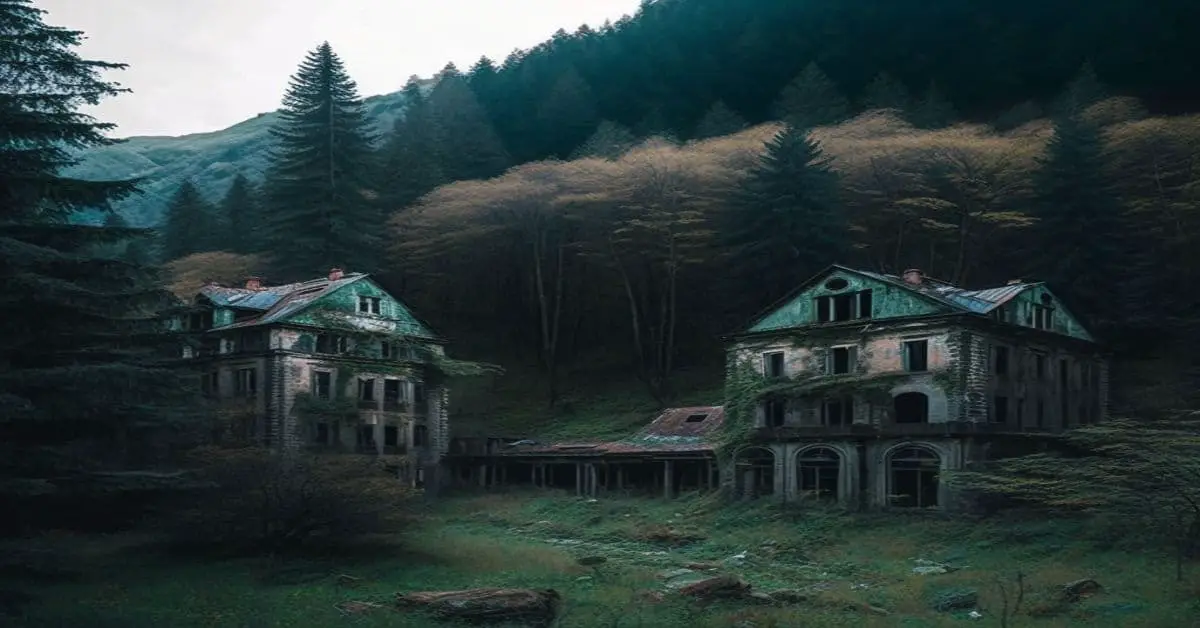Nestled in the heart of California’s gold country, Angel’s Camp is a captivating ghost town that attracts history enthusiasts and adventurers alike. Steeped in rich history and folklore, this town was once a bustling hub during the gold rush, with a population swelled to nearly 4,500 at its peak.
Today, visitors can explore the remnants of the original buildings that still stand and uncover the tales that inspired renowned writers like Bret Harte and Mark Twain. The town’s allure lies not only in its fascinating past but also in its hauntingly beautiful landscape.
From the rolling hills surrounding the town to the tranquil streams flowing through it, Angel’s Camp is a true feast for the senses. Visitors can wander through the streets lined with weathered buildings, imagining what life was like during the gold rush, or take a hike in the nearby mountains and bask in the breath-taking vistas.
Whether you’re a history buff or nature lover, Angel’s Camp is a destination that will captivate and inspire.
Key Takeaways
- Angel’s Camp is a ghost town in California’s gold country that was once a bustling hub during the gold rush era.
- The town played a significant role in literature, with the town serving as the setting for tales by Bret Harte and Mark Twain.
- Visitors can explore the remnants of original buildings and uncover tales that inspired renowned writers like Bret Harte and Mark Twain, including notable landmarks like the painted frogs on the sidewalks and the Angel Hotel, now a museum showcasing the town’s rich history.
- Angel’s Camp is a destination that will captivate and inspire history buffs and nature lovers, maintaining a post office and a small residential community with some business activity.
Location and History
Located just a few miles south of San Andres, Angel’s Camp was a bustling hub of the Mother Lode during the gold rush. The town’s historical significance lies in its role as a trading post built by George Angel, which eventually led to the growth of the settlement.
At its peak, Angel’s Camp had a population of 4,500, and its economy heavily depended on gold mining. Angel’s Camp also played a significant role in literature, with the town serving as the setting for tales by Bret Harte and Mark Twain.
The town’s impact on the local economy during the gold rush era cannot be overstated, as it was one of the major towns in the region. Angel’s Camp is a semi-ghost town with a small residential community and business activity today.
Despite its current state, the remains of many original buildings still exist, offering a glimpse into the town’s rich history.
Attractions and Landmarks
One of the notable landmarks in Angel’s Camp are the painted frogs on the sidewalks, which pay homage to the story that inspired Mark Twain’s famous tale, The Celebrated Jumping Frog of Calaveras County. The town’s association with the story has made it a popular tourist destination, with visitors taking photos with the frog murals and visiting the Angel Hotel, where the story is said to have taken place.
The hotel, built in 1855, is a historic building and is now a museum showcasing the town’s rich history. Aside from the frog murals, Angel’s Camp is also known for its association with famous tales of the Wild West, particularly those written by Bret Harte and Mark Twain.
Visitors can explore the town’s historic buildings, including the Visitor Center, which offers information on the town’s past. The ruins of Romaggie Home, the last remnant of a camp called Albany Flat, can also be found in the area. These attractions make Angel’s Camp a must-visit for history buffs and Wild West enthusiasts.
Current State
Despite its semi-ghost state, Angel’s Camp maintains a post office and a small residential community with some business activity, providing a glimpse into the town’s current state of affairs.
While the population no longer reaches the heights of the gold rush era, the town still has a few hundred residents who call it home. The community includes a mix of retirees, families, and those drawn to the town’s history and charm.
Business activity in Angel’s Camp is limited but still present. The town has many shops, restaurants, and services catering to locals and tourists. The post office, which has operated since the town’s early days, serves as a mail and package delivery hub.
Despite its quiet demeanor, Angel’s Camp attracts visitors drawn to its fascinating history and picturesque setting.
Frequently Asked Questions
What is the climate like in Angel’s Camp?
Climate Overview of Angel’s Camp suggests mild winters and hot summers with low precipitation levels. Best seasons to visit are spring and fall when temperatures are pleasant, and outdoor activities are enjoyable.
Are there any hiking trails or outdoor activities in the area?
The area surrounding Angel’s Camp offers some of the best hiking trails and outdoor adventure options. The Calaveras Big Trees State Park is a popular destination for hiking and camping, while the Stanislaus National Forest provides hiking, fishing, and water sports opportunities.
What industries or businesses are currently operating in Angel’s Camp?
A few small businesses and a post office in Angel’s Camp exist. The town’s current state is semi-ghost, with a small residential community. Historical landmarks include the Angel Hotel, while notable residents include Joaquin Miller and Black Bart.
Has Angel’s Camp been used as a filming location for movies or TV shows?
Angel’s Camp has a fascinating filming legacy, with famous movie scenes in the town. The impact of filming on the local economy and community involvement has been significant. Filming has brought revenue and attention to the town, while locals have been involved in productions as extras and crew members.
Are there any local festivals or events in Angel’s Camp throughout the year?
Angel’s Camp hosts several local festivals and events throughout the year, including wine tastings and historic landmark tours. These events attract visitors to explore the town’s rich history and cultural heritage.


